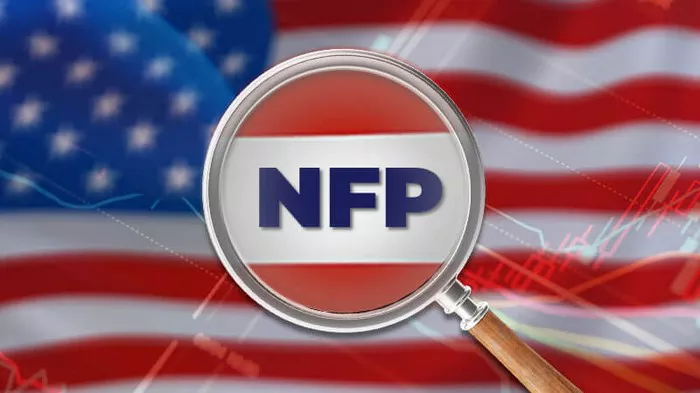Nonfarm payroll benefits play a crucial role in shaping the overall compensation package for employees across various industries. As the job market evolves and employers seek to attract and retain top talent, the landscape of benefits has transformed over time. In this comprehensive guide, we explore the types of benefits that employees commonly receive, the historical changes in these benefits, and their significance in today’s competitive employment environment.
1. Understanding Nonfarm Payroll Benefits
1.1 What Are Nonfarm Payroll Benefits?
Nonfarm payroll benefits encompass the supplementary perks and services that employers offer to their workforce, beyond the basic salary or wages. These benefits are designed to enhance the overall well-being, job satisfaction, and work-life balance of employees.
1.2 Types of Nonfarm Payroll Benefits
Health Insurance: Coverage for medical expenses, including doctor visits, hospital stays, and prescription medications.
Retirement Plans: Employer-sponsored plans such as 401(k)s, pensions, or other investment options to support employees in building financial security for retirement.
Paid Time Off (PTO): Vacation days, holidays, and sick leave to allow employees to take time away from work while still receiving pay.
Dental and Vision Coverage: Additional insurance options for dental care and vision-related expenses.
Life and Disability Insurance: Protection for employees and their families in the event of death or disability.
Flexible Spending Accounts (FSAs): Pre-tax accounts that allow employees to set aside money for qualified medical or childcare expenses.
Tuition Reimbursement: Assistance with the costs of continuing education or professional development.
Employee Assistance Programs (EAPs): Support services, such as counseling or wellness programs, to help employees navigate personal challenges.
2. Historical Changes in Nonfarm Payroll Benefits
2.1 Post-War Era to 1970s
During the post-World War II era, health insurance and retirement benefits gained prominence. Many employers offered defined benefit pension plans, providing employees with a reliable income stream in retirement. Health insurance coverage also expanded during this period.
2.2 1980s to Early 2000s
The 1980s saw a shift from defined benefit pension plans to defined contribution plans like 401(k)s. Employers began to place more responsibility on employees for their retirement savings. Health maintenance organizations (HMOs) and preferred provider organizations (PPOs) gained popularity as alternative health insurance models.
2.3 Late 2000s to Present
In recent years, there has been a focus on offering a diverse range of benefits to cater to the preferences of a multigenerational workforce. The gig economy has also led to discussions about extending benefits to contingent workers. Employers increasingly recognize the importance of work-life balance and mental health support.
3. The Significance of Nonfarm Payroll Benefits Today
3.1 Employee Recruitment and Retention
In a competitive job market, attractive benefits packages can be a decisive factor in recruiting and retaining top talent. Comprehensive benefits contribute to employee satisfaction and loyalty.
3.2 Employee Well-Being and Productivity
Benefits like health insurance, wellness programs, and flexible work arrangements contribute to the overall well-being of employees. Healthy and satisfied employees are more likely to be productive and engaged in their work.
3.3 Meeting Diverse Needs
The modern workforce is diverse, with varying needs and priorities. Offering a range of benefits allows employers to address the unique requirements of different employees, promoting inclusivity.
4. Nonfarm Payroll Benefits FAQs
1. Are nonfarm payroll benefits mandatory?
While some benefits, such as Social Security contributions, may be mandatory, many others are voluntary. Employers choose the benefits they offer based on company policies and industry standards.
2. Can employees negotiate their benefits packages?
Yes, employees can negotiate certain aspects of their benefits packages. This may include salary, vacation time, or specific benefits based on individual needs and priorities.
3. How do changes in economic conditions impact nonfarm payroll benefits?
During economic downturns, some employers may cut back on certain benefits to manage costs. Conversely, in robust economic conditions, employers may enhance benefits to attract and retain talent.
4. What is the role of government regulations in nonfarm payroll benefits?
Government regulations, such as the Affordable Care Act (ACA) in the United States, can influence the types of benefits employers are required to provide. Regulations may vary by jurisdiction.
5. How can employers gauge the effectiveness of their benefits programs?
Employers can assess the effectiveness of their benefits programs through employee surveys, retention rates, and feedback mechanisms. Regular reviews allow adjustments to meet changing workforce needs.
In conclusion, nonfarm payroll benefits have undergone significant changes over the years, reflecting evolving societal expectations and economic conditions. Today, employers recognize the pivotal role that benefits play in attracting and retaining a skilled workforce. By offering a diverse array of benefits that address the diverse needs of employees, organizations can create a positive and supportive work environment, fostering employee satisfaction and productivity.

